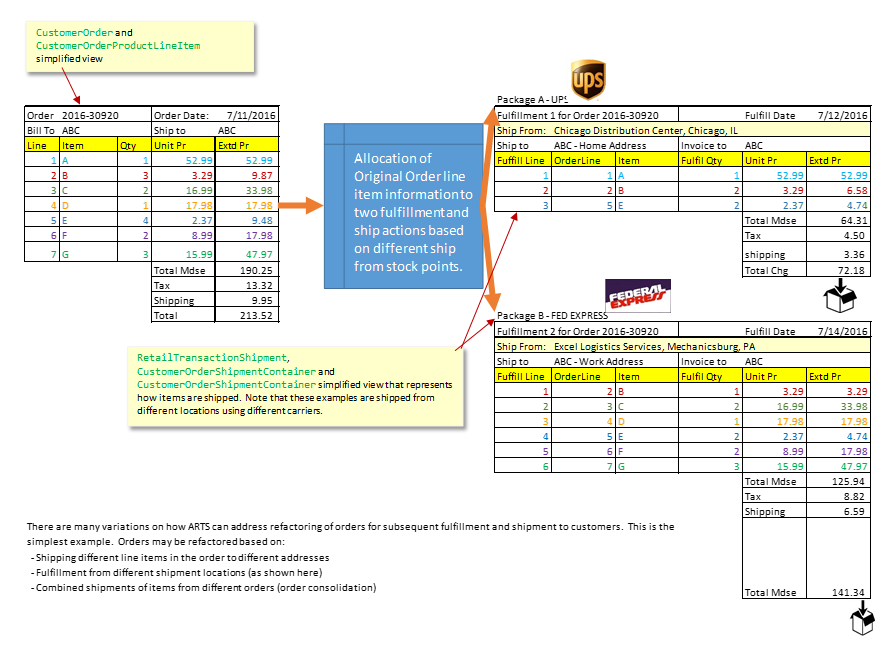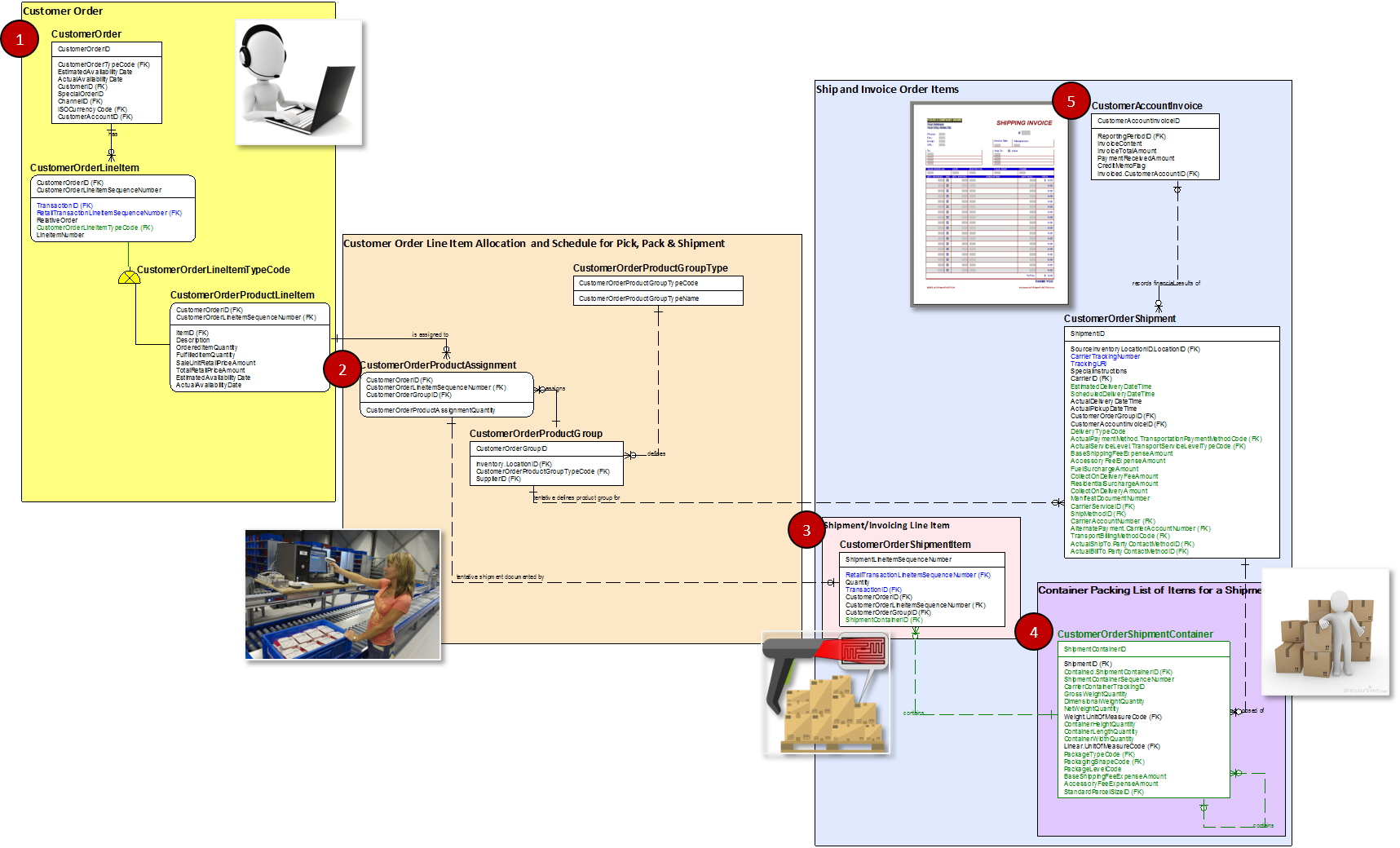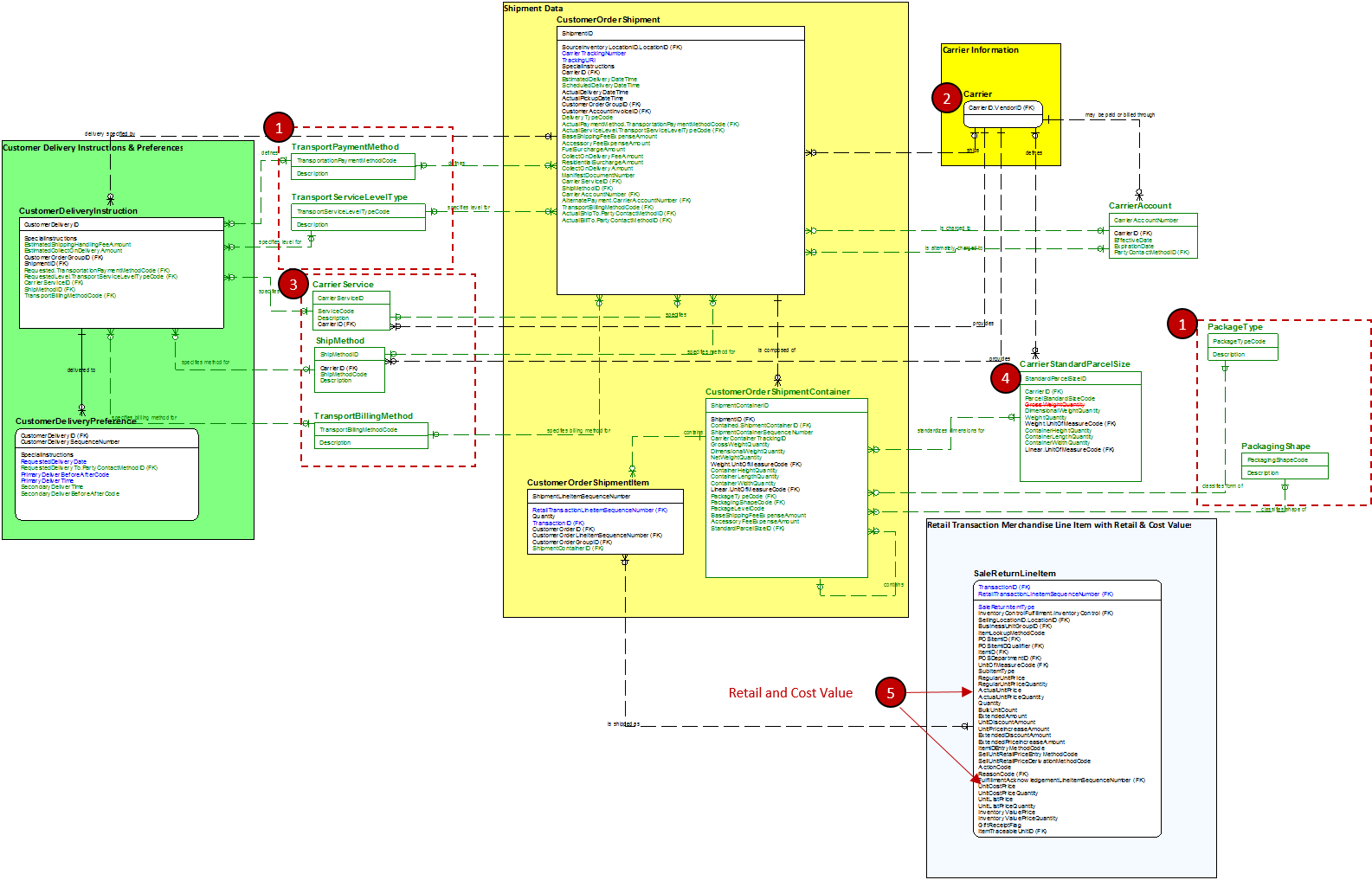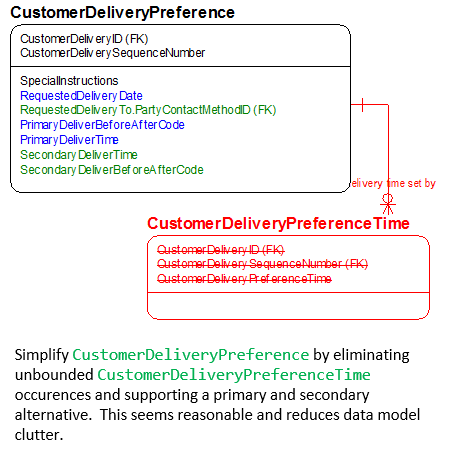Subject Area Concepts Logical 07602 extends and improves on the handling of customer order delivery in ARTS. It adds new entity types and attributes that more completely capture the transportation specifications, transport container(s), fees and add GS1 compliant reference tables. In addition to the new entities, this narrative explains how ARTS integrates orders and order line items with fulfillment, shipping and invoicing views of customer orders. Allocating Order Line Items to Shipments and Shipment Line ItemsWe use the term "allocating" here to describe how retailers break customer orders down for order picking, packing and shipment to the ship to addresses identified in the original order. It is common for a given order to be picked and shipped in more than one shipment (as illustrated below). Figure 65 - Conceptual Customer Order Line Item Allocation Example
From a data modeling standpoint the concept of reallocating order line items to shipments s is implemented through a series of intermediate join entity types which are illustrated in the following informal entity model. The starting point in the diagram is Œ CustomerOrder and CustomerOrderProductLineItem. These two entities represent the order and its line items. The order line items may be assigned to CustomerOrderProductGroup through the CustomerOrderProductAssignment. This entity is the mechanism ARTS uses to allow an order to be split up and its components reassigned to product groups for picking, packing and shipping operations. The CustomerOrderProductAssignment (which is an order line item level entity) is referenced by a Ž CustomerOrderShipmentItem. That foreign key reference establishes a link between a whole or partial ordered line item and its subsequent picking, packing and shipment action. The picking and packing action involves placing items into a CustomerOrderShipmentContainer (a carton, tote, box, pallet or some other object used to carry merchandise items being transported from a retailer to the customer). One or more CustomerOrderShipmentContainer entity instances make up a CustomerOrderShipment. The creation of the CustomerOrderTransactionShipment in most order fulfillment scenarios happens when an order (or part of an order) is released to be picked up by the carrier and transported to the customer. At that time, a CustomerAccountInvoice is created to record the transfer of merchandise to the customer and to book sales revenue and complete authorization of debit/credit pre-authorized tender transactions. Figure 66 - Core ODM V73 Order Line Item Reallocation to Shipment Line Item Entity Types (Informal Entity Model)
The CustomerOrderShipmentContainer is a new entity type introduced in ODM V7.3. Its purpose is to more completely reflect the physical handling of merchandise items for logistics and transportation purposes. The original ODM V7.2 model directly linked CustomerOrderProductAssignment level detail to shipment items which is not how most orders are accounted for. By incorporating the concept of a container which carries individual order merchandise items and is used to bill and track carrier-level activity, this new entity provides a more complete, correct model for shipping and delivery of merchandise from a retailer to its customers. Shipment and Delivery Reference Entity TypesThe ODM V7.3 introduces a number of new entity types to improve contextual information about shipping and delivery of customer orders. The following figure highlights the main kinds of reference entities added to the data model. The detailed entity and attribute definitions may be accessed through the ERD for this data model subject area.
Figure 67 - Additional Attributive Entity Types to Incorporate Relevant GS1 Standard References
Two new entity types Πare available to represent transportation payment method (which may be separate from order payment) and transportation service level. Service level indicates the number and types of ancillary services may be provided by a carrier like obtaining a receipt signature, sending email notification of delivery, etc. A new CarrierAccount entity type supports scenarios where a retailer may procure shipment services from a carrier using multiple accounts. New entities, CarrierService, ShipMethod and TransportBillingMethod enable retailers to validate and report transportation related activity with greater consistency and accuracy. As modeled, these are retail designated code values. Most major carriers like UPS, Federal Express, the US Postal Service, DHL and others have standard package dimensions and weight they use to make shipping and shipping bills easier to handle. The CarrierStandardParcelSize enables retailers to use carrier-specific standardized package specifications as part of their shipping process. The SaleReturnLineItem (which is part of a RetailTransaction) is used to associate a payment with a shipment and contains the retail and cost values required to declare the value of merchandise being shipped for customs fees and related taxes. Dropped EntityThe ODM V7.3 is eliminating the CustomerDeliveryPreferenceTime entity. This is a trade-off decision and is based on the desire to simplify the model and the typical practice of most carriers that limits the number of delivery times they will support. Figure 68 - Dropped Customer Order Delivery Entity
|



